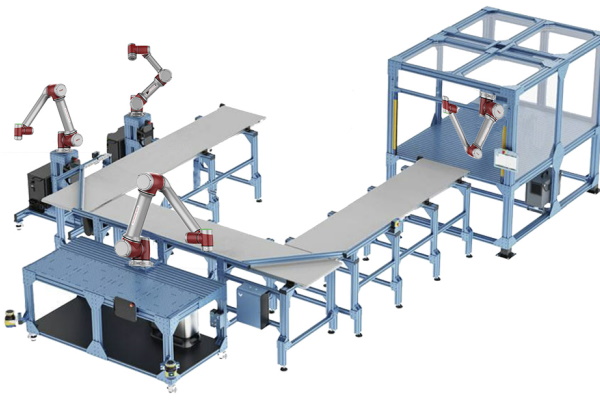As the industrial robotics industry continues evolving, cobots are becoming increasingly popular for businesses. Collaborative robots, or cobots, are designed to work alongside human operators in a shared workspace, making them a cost-effective solution for small and medium-sized businesses.
One of the significant benefits of cobots is that they can help reduce labor costs. Cobots are typically programmed to perform repetitive tasks, allowing human operators to focus on more complex and value-added activities. This means businesses can maintain or increase their output levels while reducing their workforce.
Cobots can operate 24/7 and perform tasks during off-hours, reducing the need for overtime pay or additional staff.
Cobots are also designed to be easy to set up and program, meaning businesses can quickly implement them without extensive training or reconfiguration of the workspace. With a user-friendly interface, operators can program the cobots to perform specific tasks, and the cobots can then repeat the same task with consistent quality and speed.
Key benefits of cobots include:
- Increased productivity: Collaborative robots can work alongside human operators, allowing for a more efficient workflow. They can perform repetitive tasks without getting tired, bored, or making mistakes.
- Improved safety: Collaborative robots are designed to work safely alongside humans, with features like safety sensors and emergency stop buttons. They can reduce the risk of workplace accidents and injuries, especially in hazardous or high-risk environments.
- Flexibility: Collaborative robots can be programmed to perform a wide range of tasks and can be easily reprogrammed or reconfigured to adapt to changing production needs.
- Cost savings: Collaborative robots are often more affordable than traditional industrial robots, making them more accessible to small and medium-sized businesses. They also require less space, energy, and maintenance, resulting in cost savings over time.
- Improved product quality: Collaborative robots can improve product quality by performing tasks precisely and consistently. They can also perform quality control checks and detect defects.
- Employee satisfaction: Collaborative robots can perform repetitive or physically demanding tasks, allowing human workers to focus on more complex and rewarding tasks. This can improve employee satisfaction and reduce the risk of burnout.
- Faster time-to-market: Collaborative robots can speed up production, allowing businesses to get products to market faster and stay competitive.

